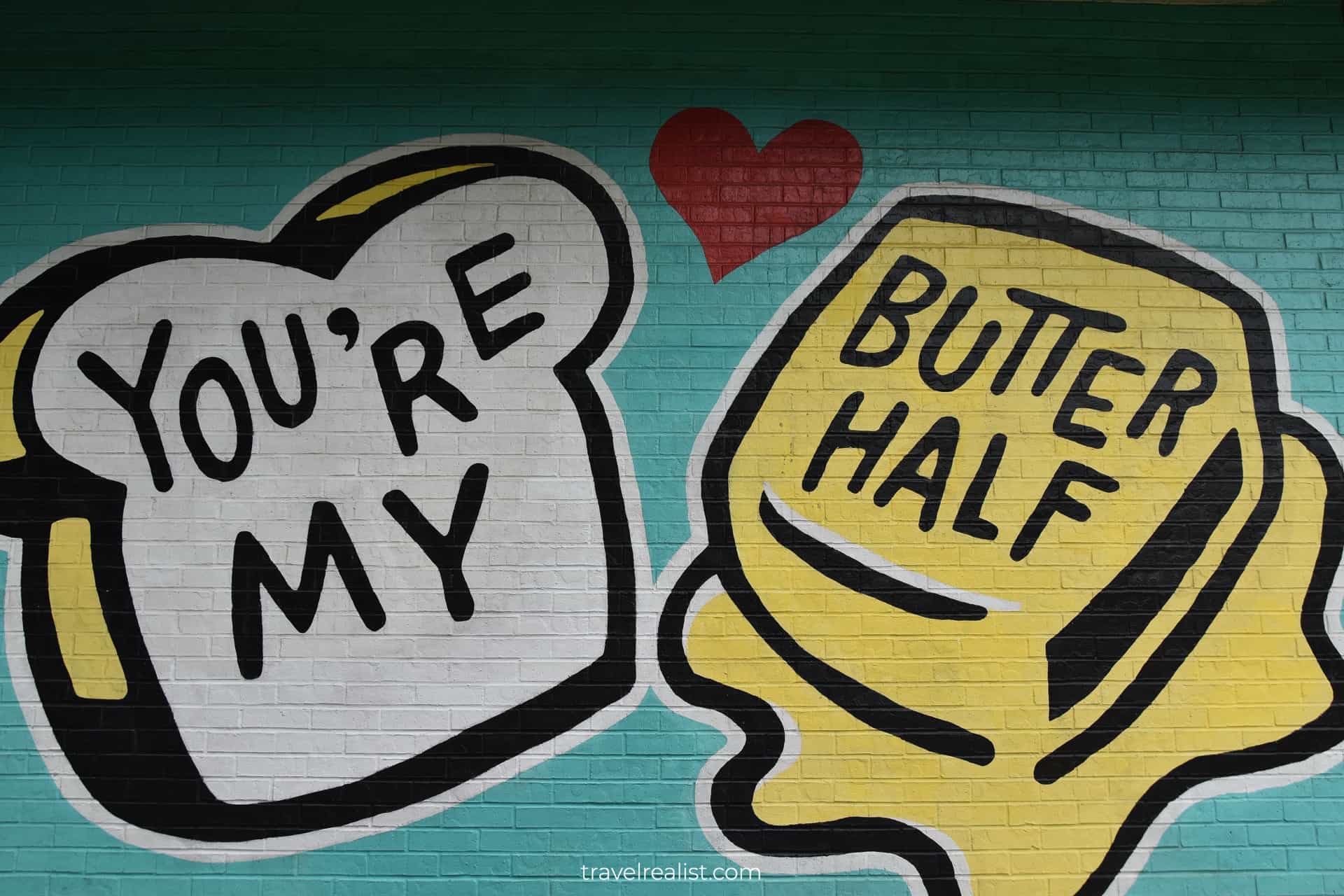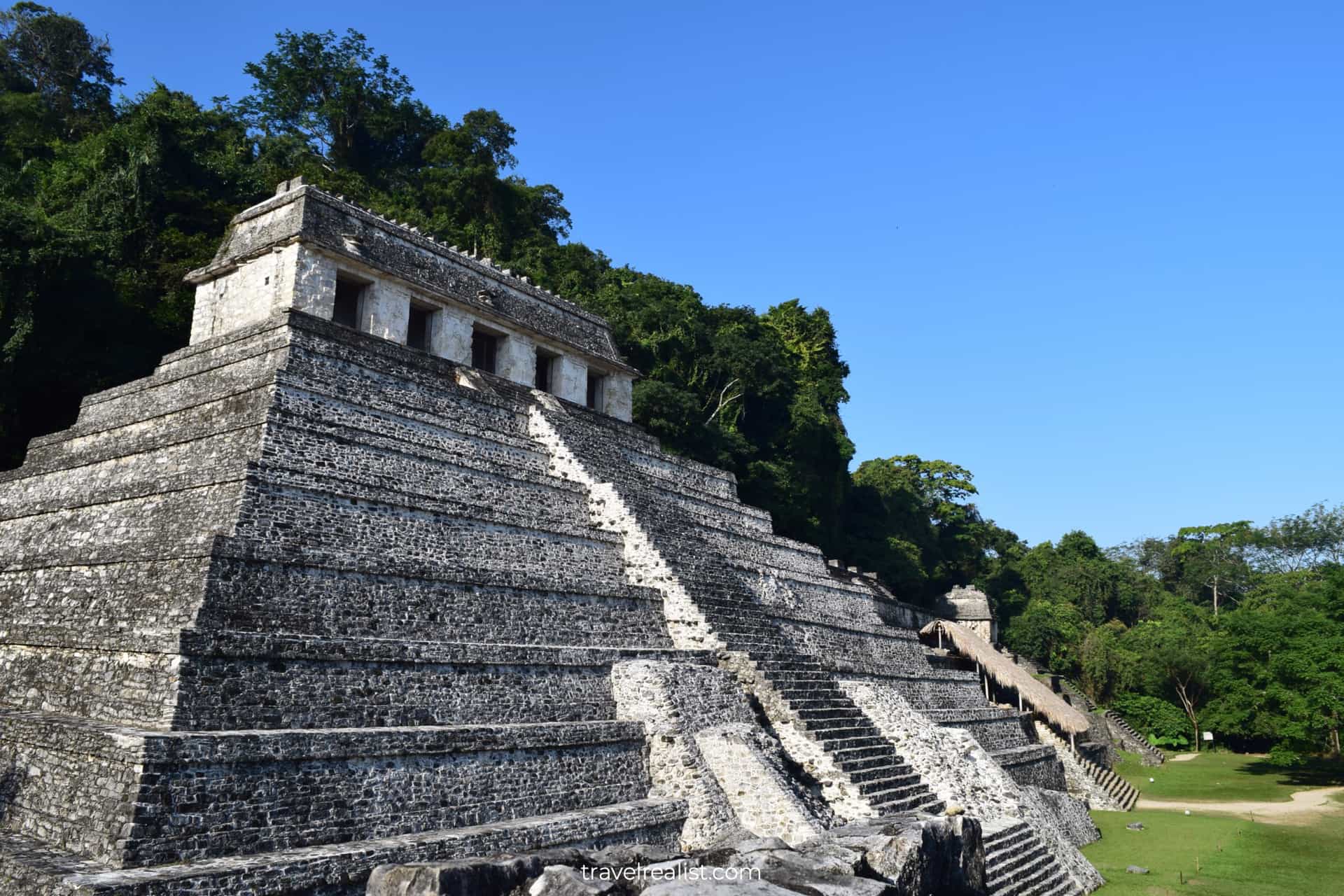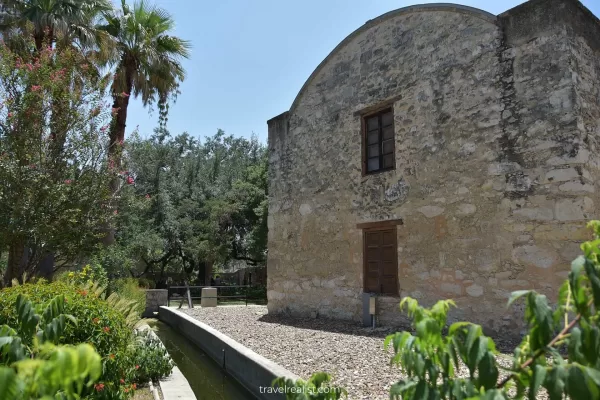Joshua Tree: Coachella Is More Than The Festival
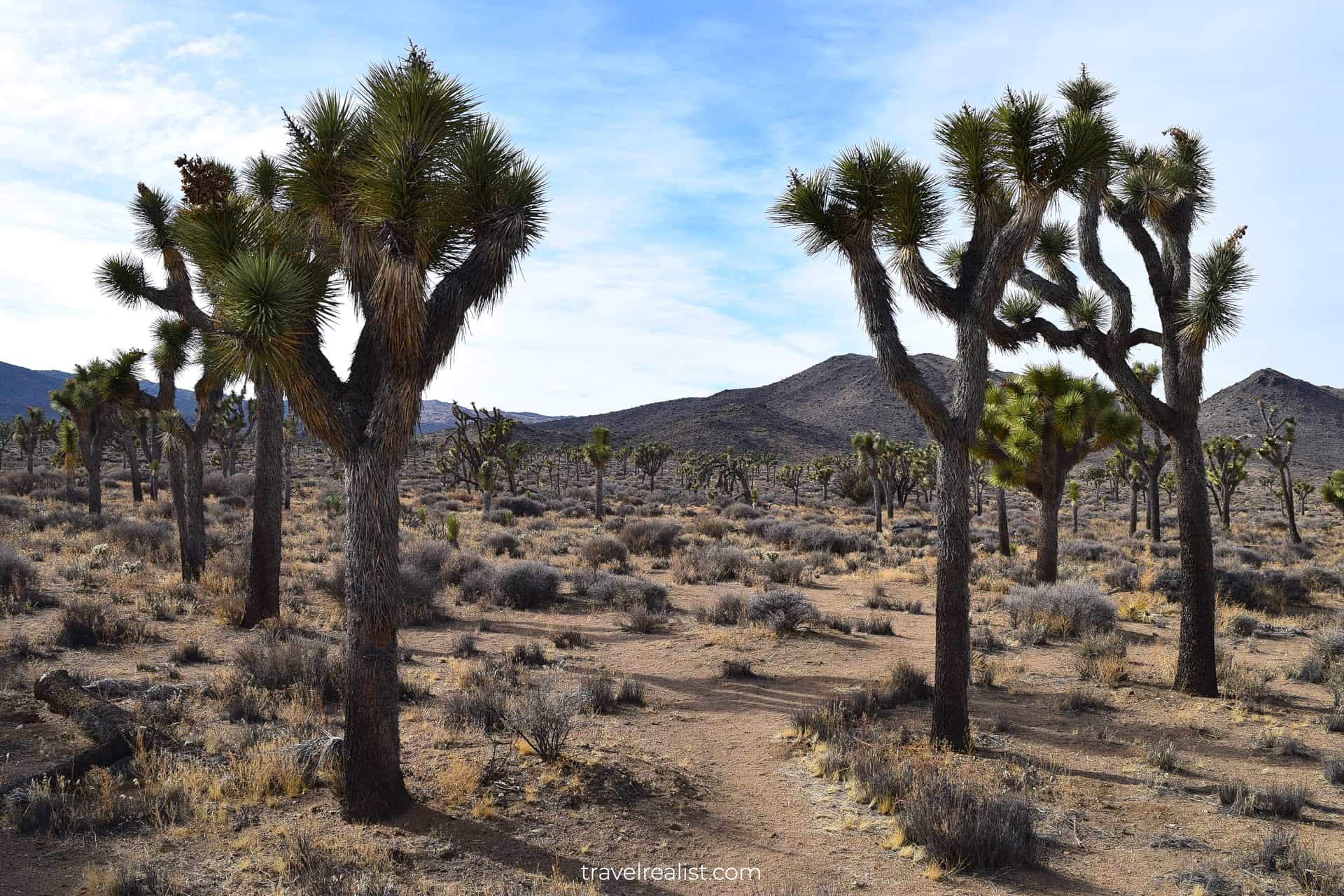
Joshua Tree National Park Guide
Use our realist Joshua Tree Guide to plan your next adventure in this national park. Joshua Tree National Park protects numerous same named desert plants and an ecosystem around them. We visited Joshua Tree National Park during our fall trip of the Southwestern United States.
This post includes affiliate links that will earn us commission if you make a purchase via these links.
Getting to Joshua Tree
Joshua Tree National Park is located in Southern California about 2 hours east of Los Angeles, CA. There are three main entrances into the park. The Cottonwood Visitor Center is the closest to the Interstate Highway I-10 but also the furthest away from Los Angeles, CA. The North and West Entrance Station are easier to reach from the city and have more plentiful attractions. We entered the park from Twentynine Palms, CA, Oasis Visitor Center, and the North Entrance Station.
Where to Stay
Joshua Tree’s visitors can choose from a variety of accommodation options. The properties in Twentynine Palms, CA would be the closest to the park’s North Entrance Station. The national park is also adjacent to the Coachella Valley to the west. Thanks to the annual Coachella Valley Music and Arts Festival, there are plenty of properties in Palm Springs, CA. Finally, you could venture towards LA and seek accommodation in San Bernardino, CA or Riverside, CA. No matter what location you end up choosing, avoid visiting Joshua Tree National Park during the Coachella Festival in the spring. That is the time when accommodation options become sparse while airfare and car rental prices skyrocket.
Entrance Requirements & Passes
Joshua Tree National Park is open every day of the year. According to the park’s website, visitation peaks in spring, remains high in fall and winter, and dropped in the summer. The temperature patterns support these visitation trends. Overall, Joshua Tree is one of the best winter getaway destinations.
Joshua Tree National Park charges per vehicle admission fees. The park also honors America the Beautiful annual park passes and provides free admission to the pass holder and everyone in a personal vehicle.
Sights & Places of Interest
The park is home to numerous Joshua Trees. The plants that gave the park its name are known under several names. Yucca Palm, Yucca Brevifolia, and Joshua Tree all refer to the same plant. People often assume that Joshua Tree is a cactus, a tree, or a hybrid. In reality, Joshua Tree is none of them. Rather, this plant is a succulent. Due to succulents’ water storing abilities, Joshua Tree is an ideal plant for the desert. And this national park’s desert location created an ecosystem where Joshua Trees can thrive.
Wilson Canyon
After entering the park via the North Entrance Station, we proceeded towards the Cottonwood Visitor Center. That made Wilson Canyon our first overlook in Joshua Tree.
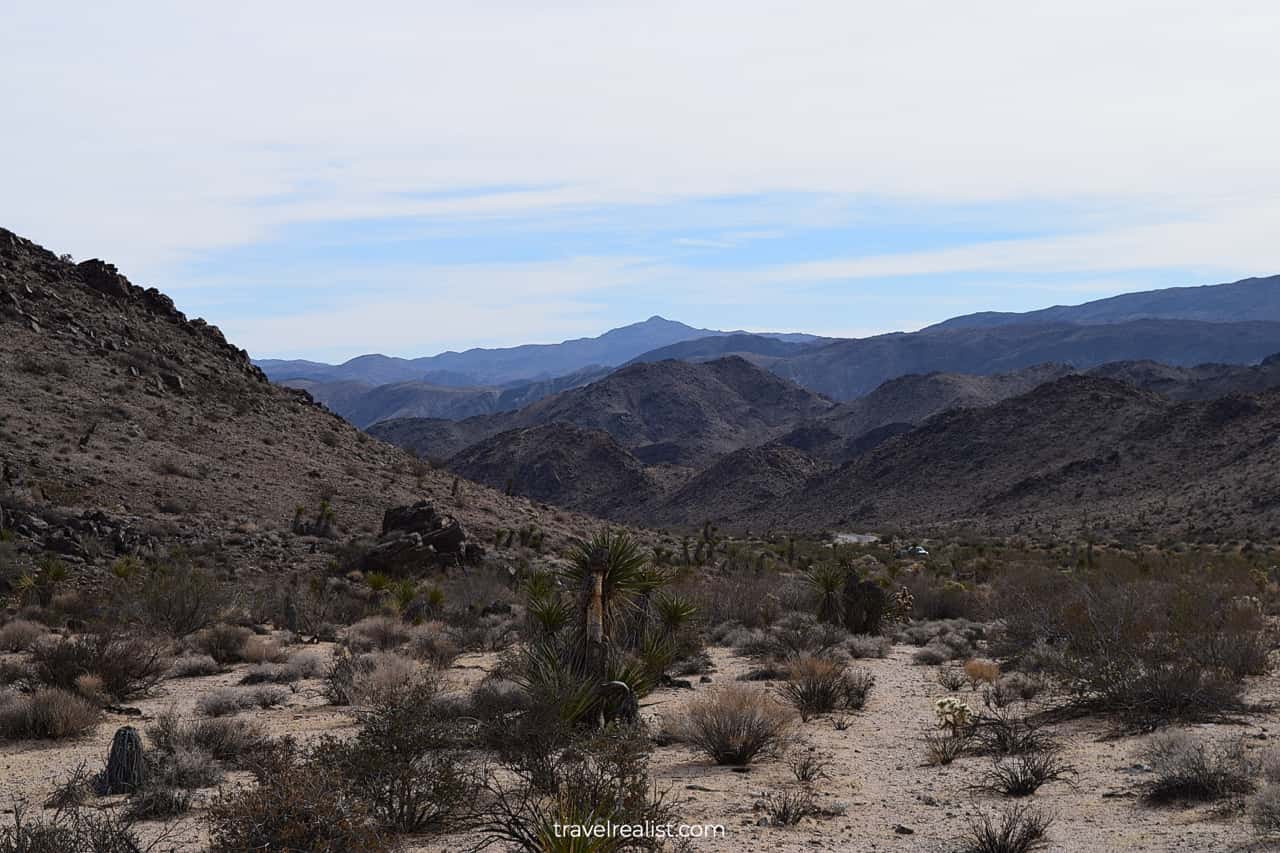
Cholla Cactus Garden
Surprisingly, this area of the park does not feature many Joshua Trees. Dwarf Palmettos, Cholla Cacti, and bushes dominate the view instead. The Pinto Basin Road took us to the beautiful Cholla Cactus Garden. As the name suggests, this area is home to a large number of Cholla Cacti. You can wander around these plants and study them up-close.
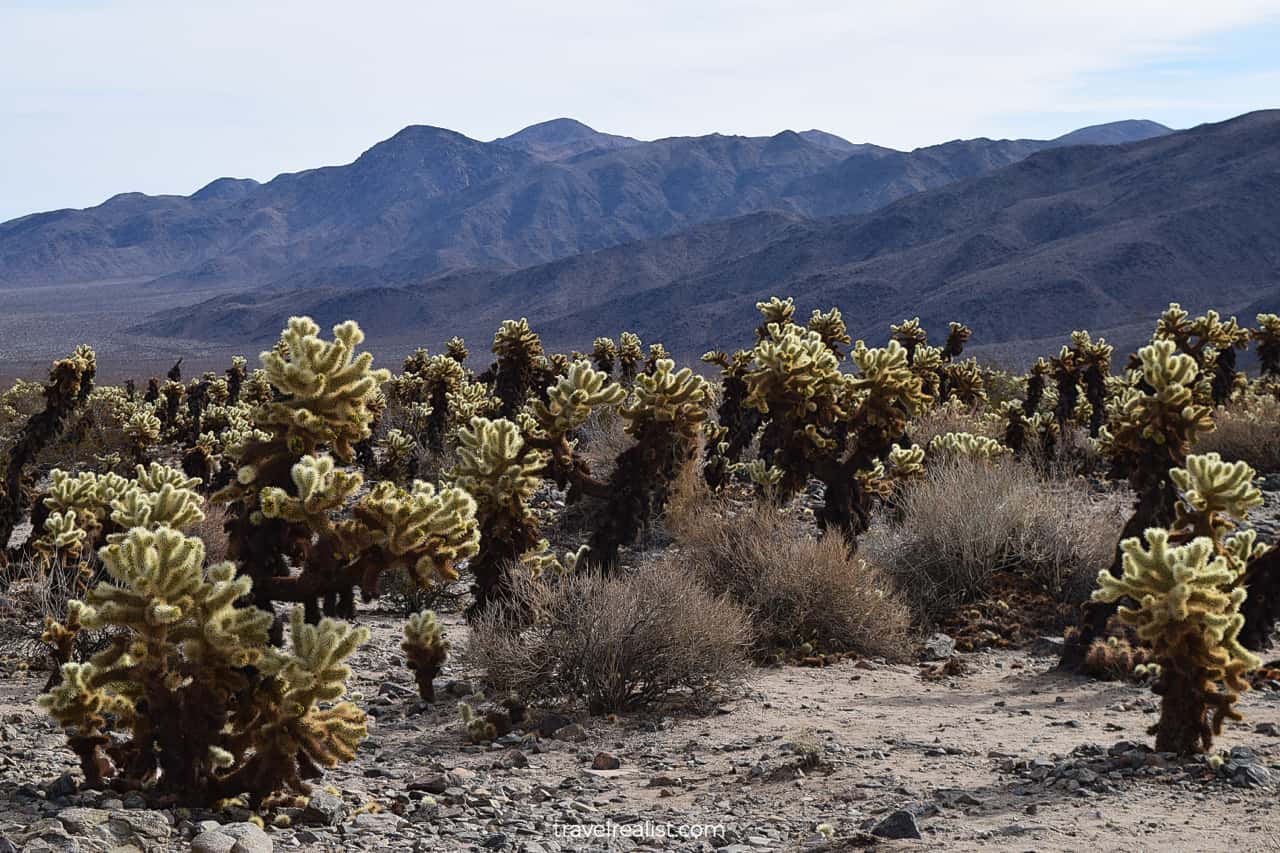
Jumbo Rocks
As we finished exploring the garden, we had two options: continue towards the Cottonwood Visitor Center or turn back towards the main park sights. Joshua Tree is an enormous park and driving distances could add up. Since our itinerary involved a drive to Los Angeles, CA, we elected to turn back. A drive on the Park Boulevard brought us to the Jumbo Rocks, Split Rock, and Live Oak.
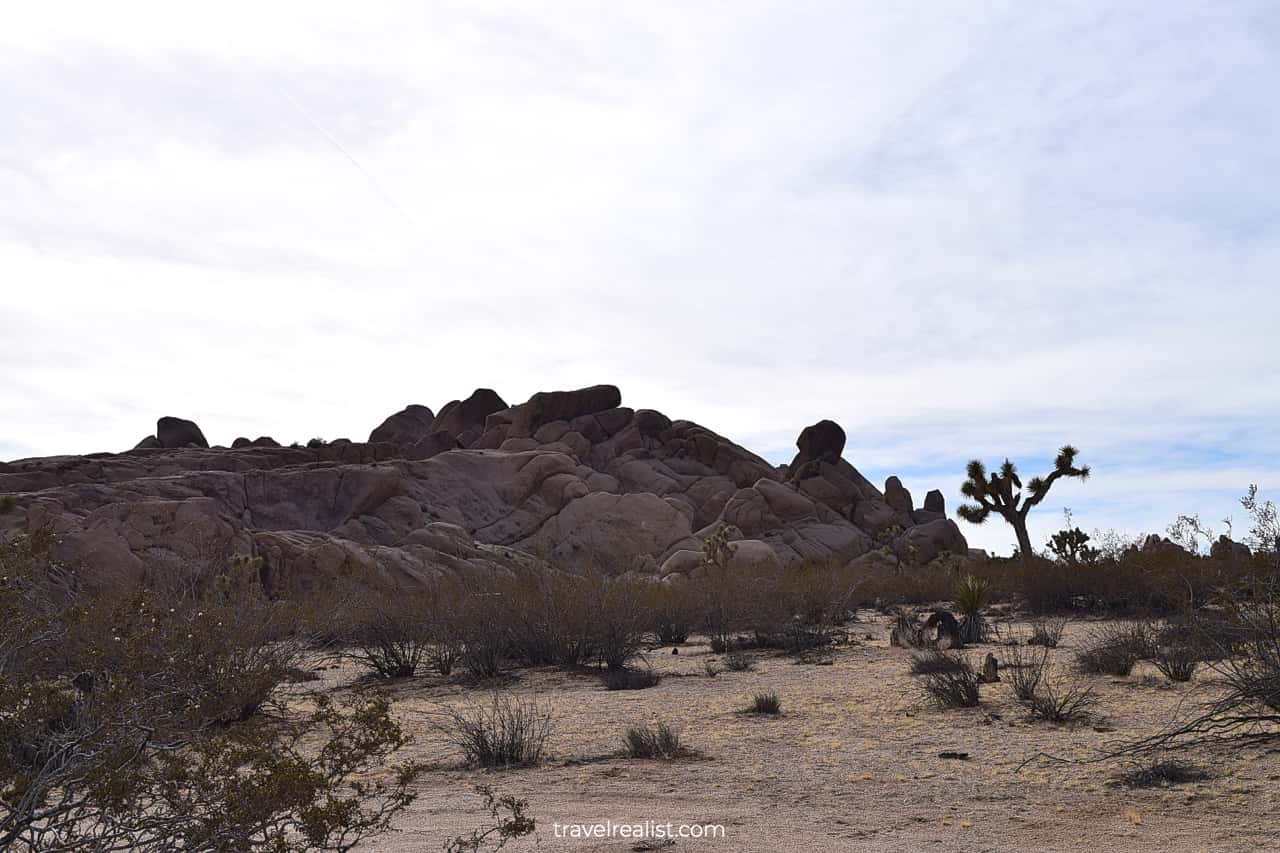
The last stretch of the road towards the rocks was unpaved. Driving on sand was more enjoyable than getting to Devils Golf Course in Death Valley.
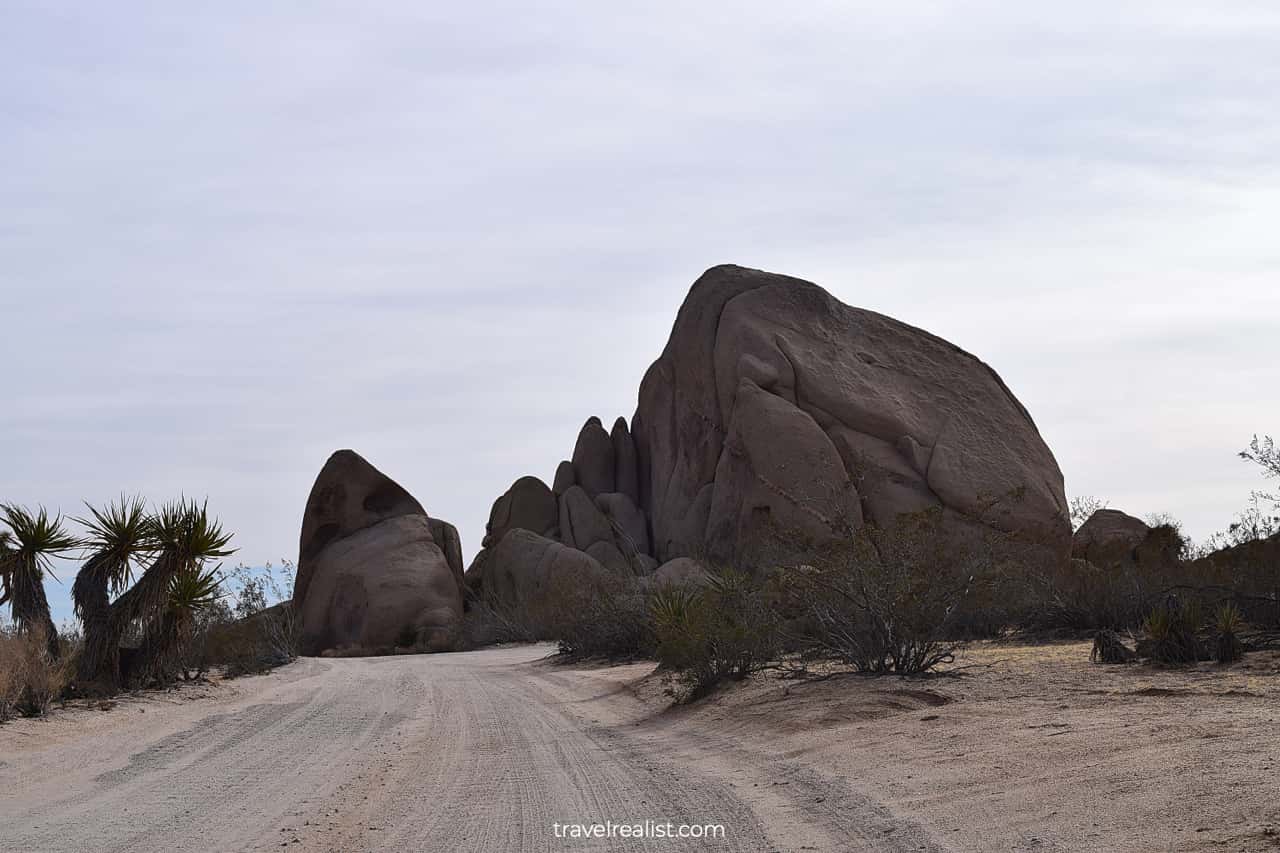
The Jumbo Rocks and Joshua Trees make a great combination.
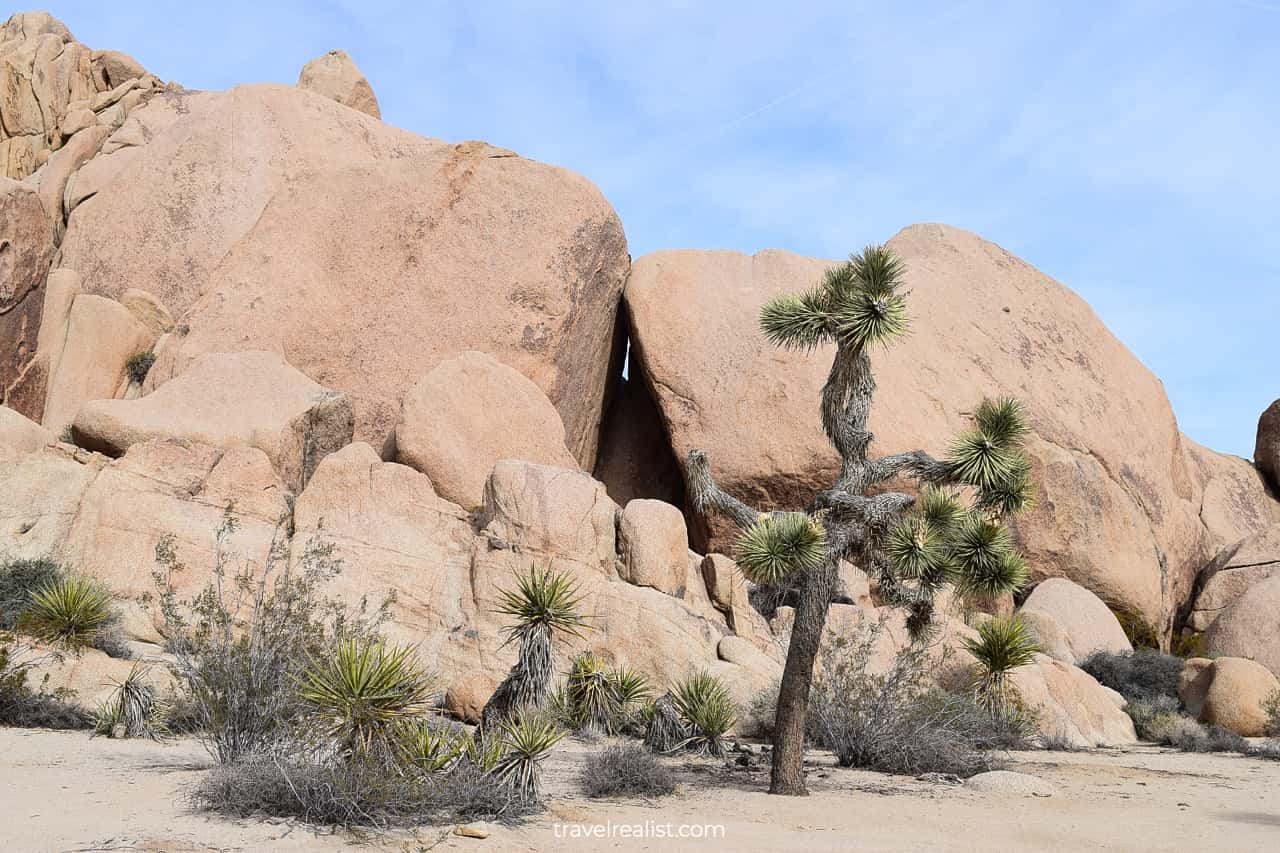
Skull Rock
The Skull Rock was our next quick stop. The rock is right next to the road. However, a small unmarked parking lot makes it easy to confuse this Rock with any unnamed viewpoint or trailhead. Yet, when you spotted the Skull Rock, the resemblance is striking.
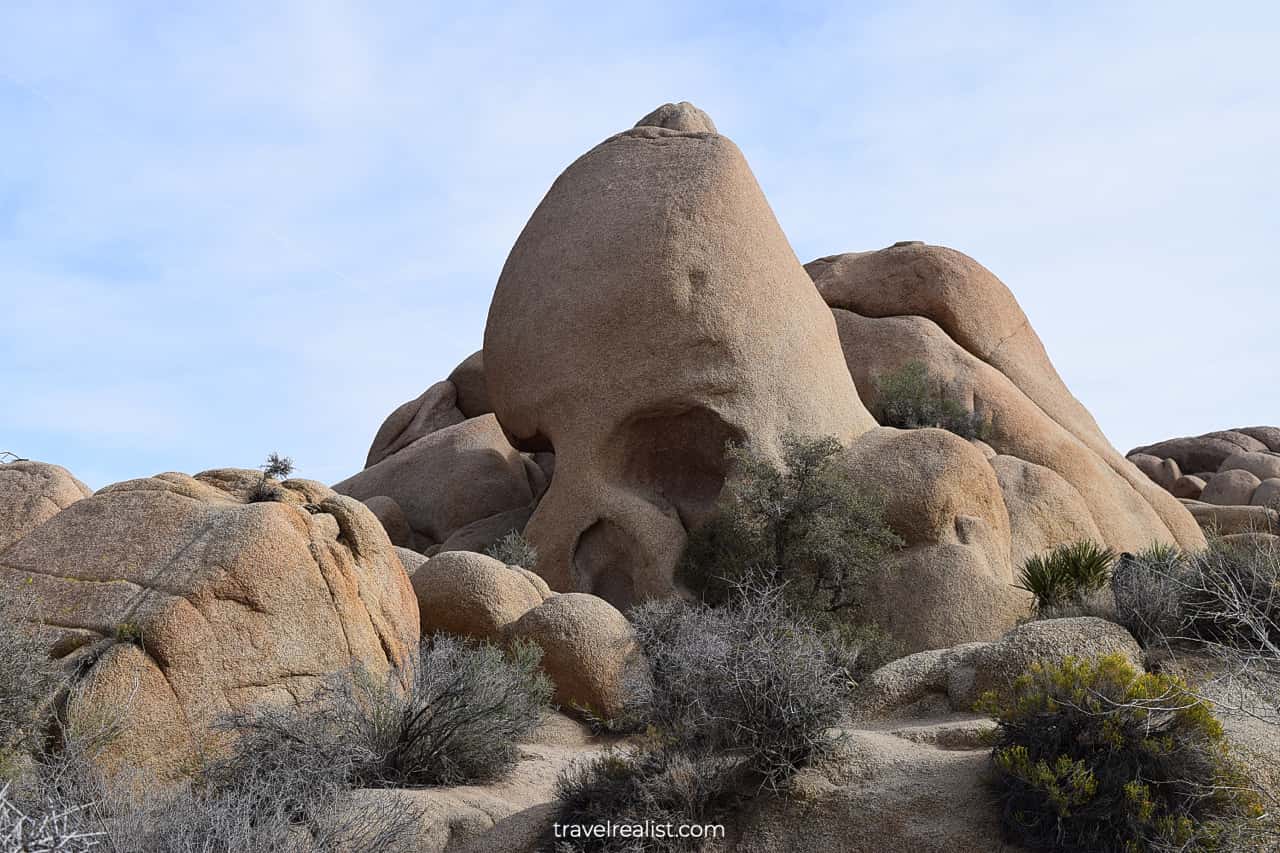
Lost Horse Valley
As we explored what else Joshua Tree National Park had to offer, we drove via the Lost Horse Valley to the Keys View.
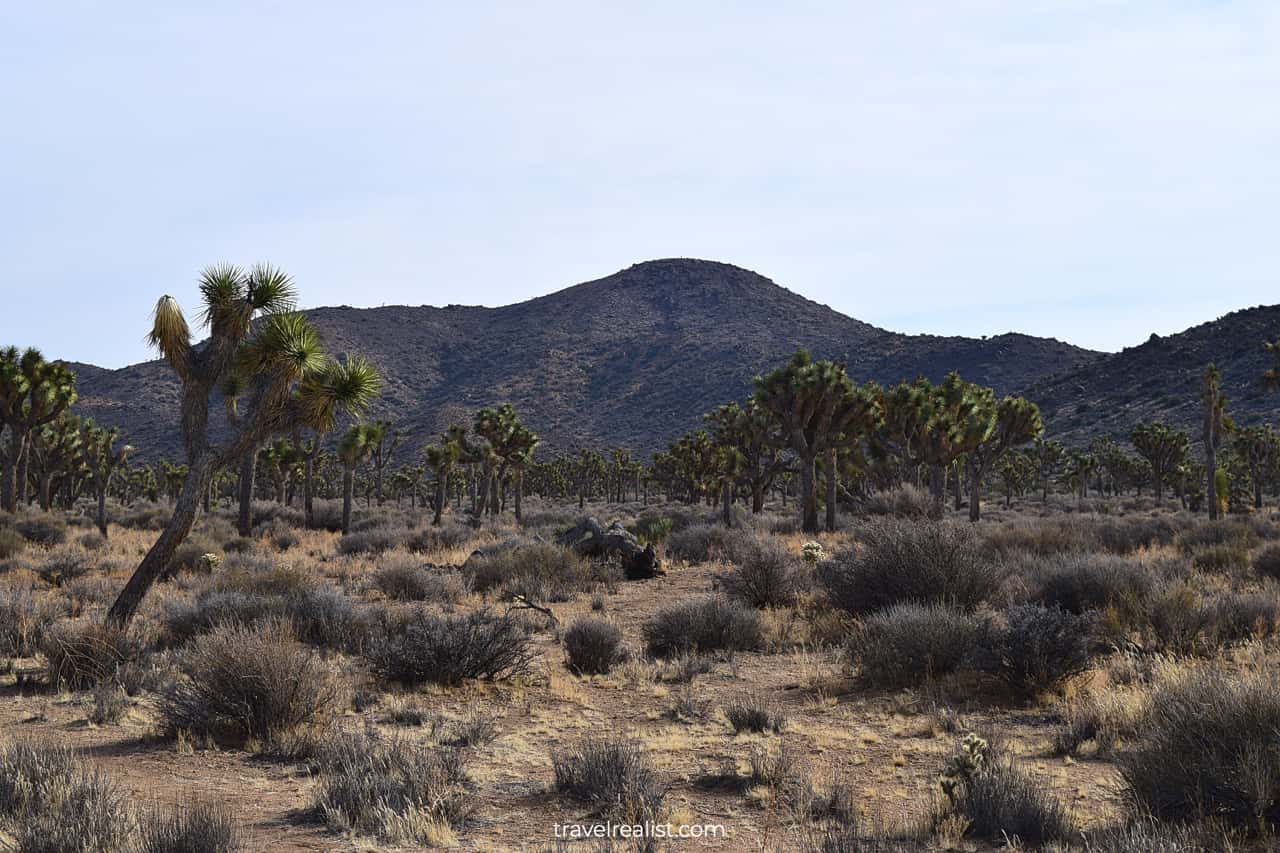
Keys View
The Keys View offered spectacular views of the famous Coachella Valley from the altitude of 5,185 ft (1,581 m). This viewpoint exhibited similarities with the Dantes View in Death Valley National Park. Unfortunately, smog is often present in the valley, which affects both air quality and visibility.
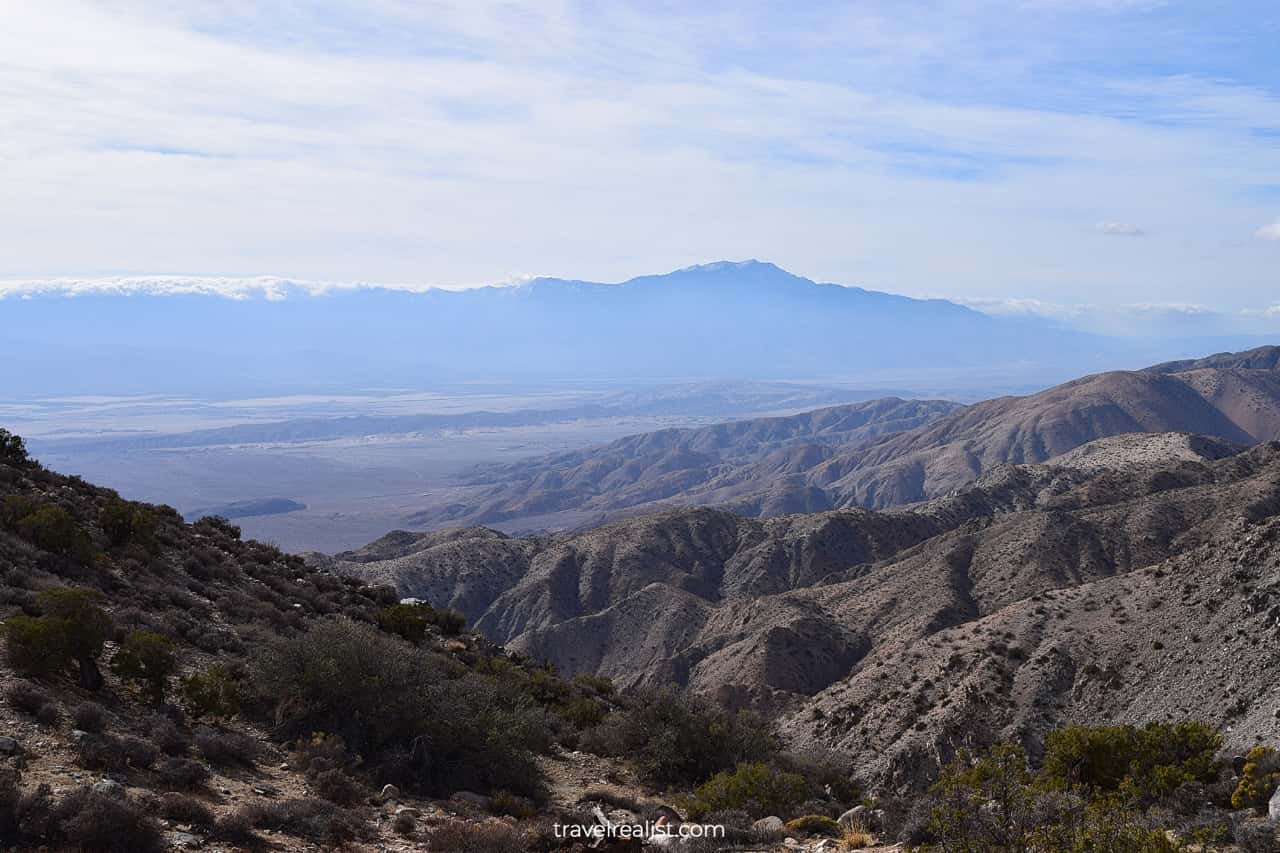
The Keys View road ends in a dead end. We used this opportunity to enjoy the Lost Horse Valley one more time.
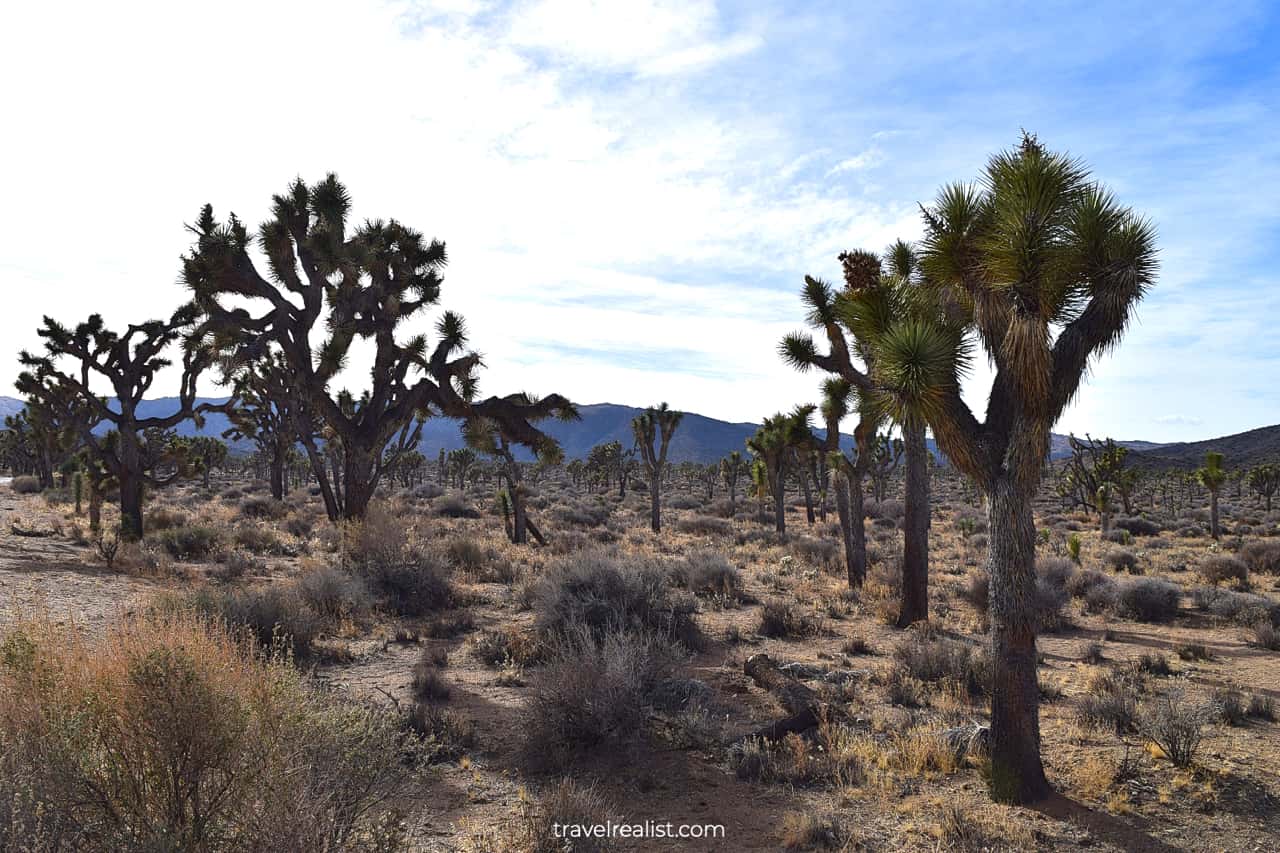
This valley is one of the most beautiful places in the park. From our standpoint, the Lost Horse Valley has the best views of the desert, Joshua Trees, mountains, and the sky.
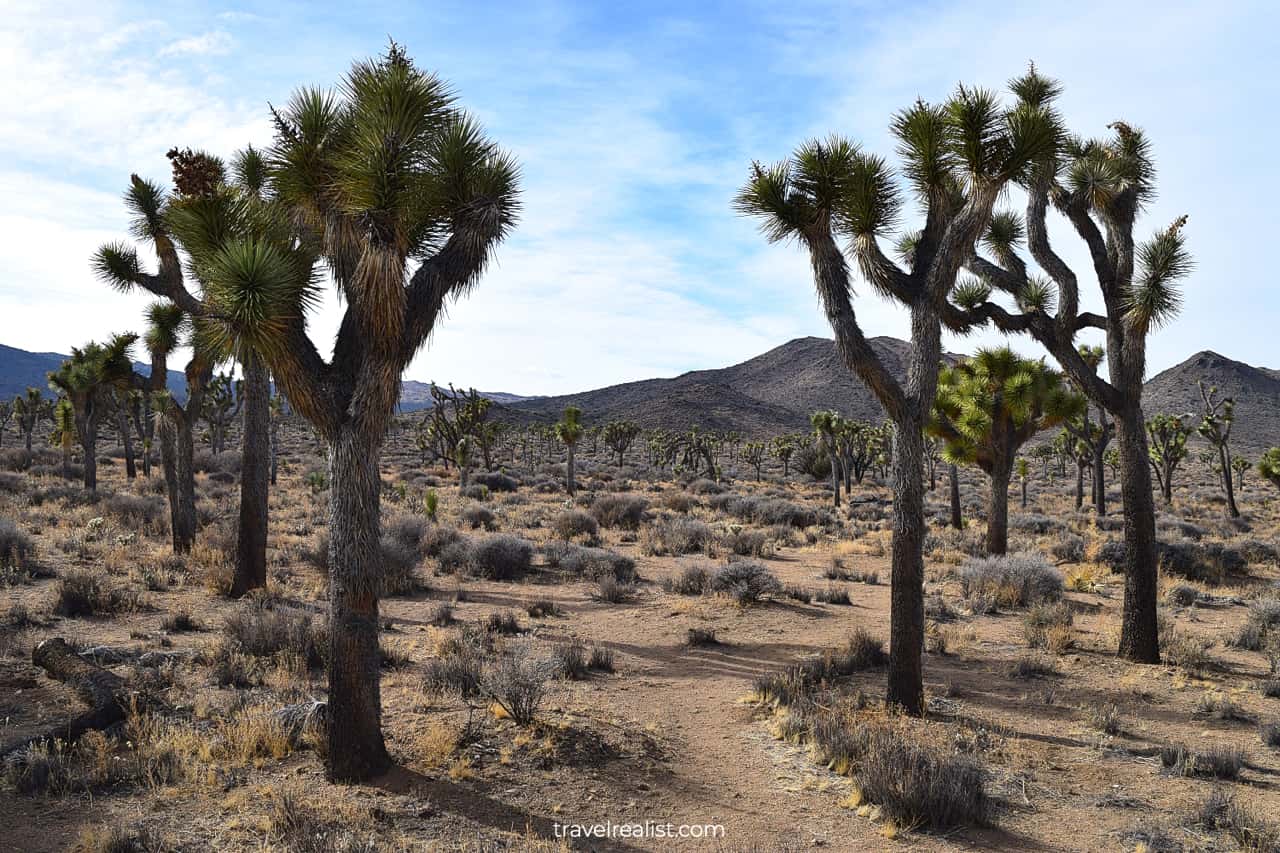
The road has several winding turns. Yet, it does not disturb the surrounding landscape due to a thoughtful design and integration.
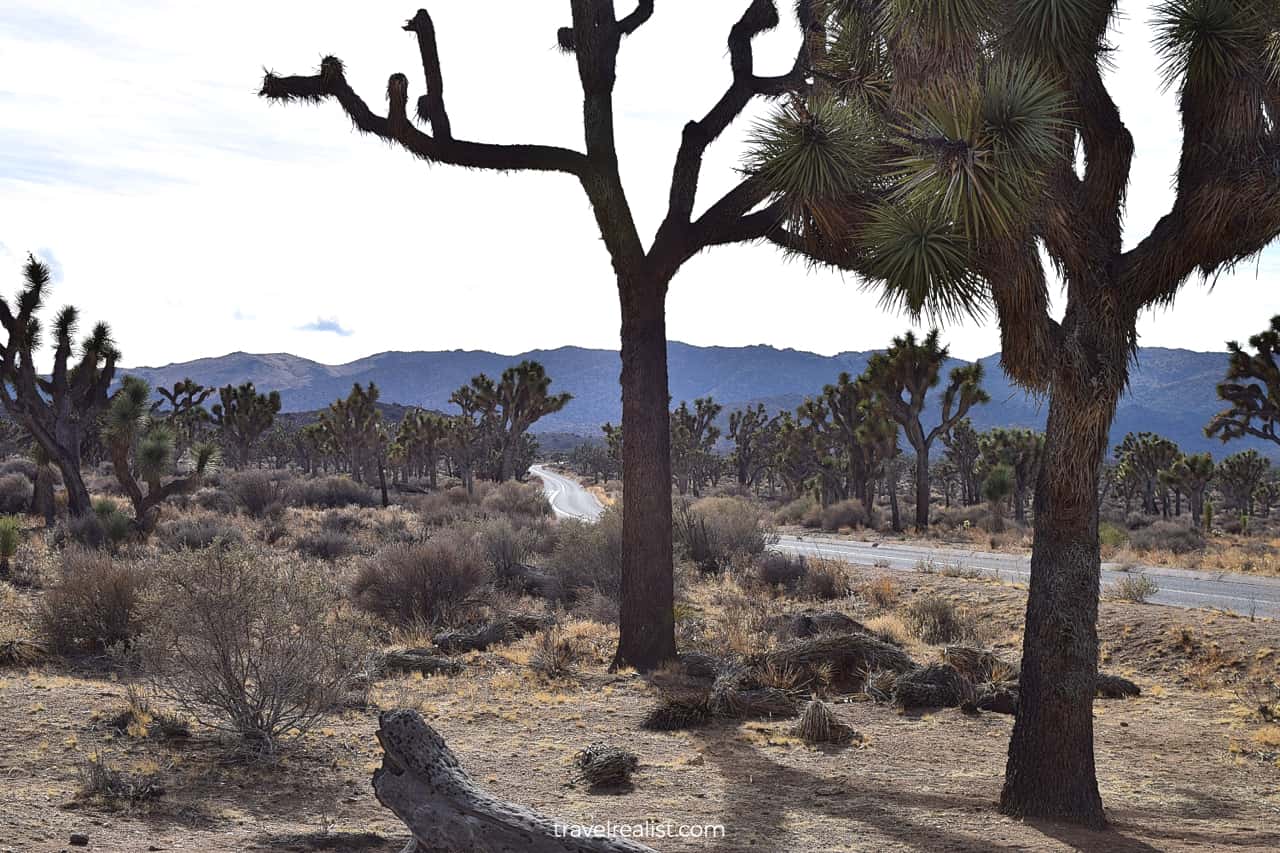
Cap Rock
The intersection of the Keys View Road and the Park Boulevard is home to the Cap Rock. This is a picnic area with a self-guided trail. As usual in this national park, Joshua Trees make the boulders in the desert appear a lot more lively.
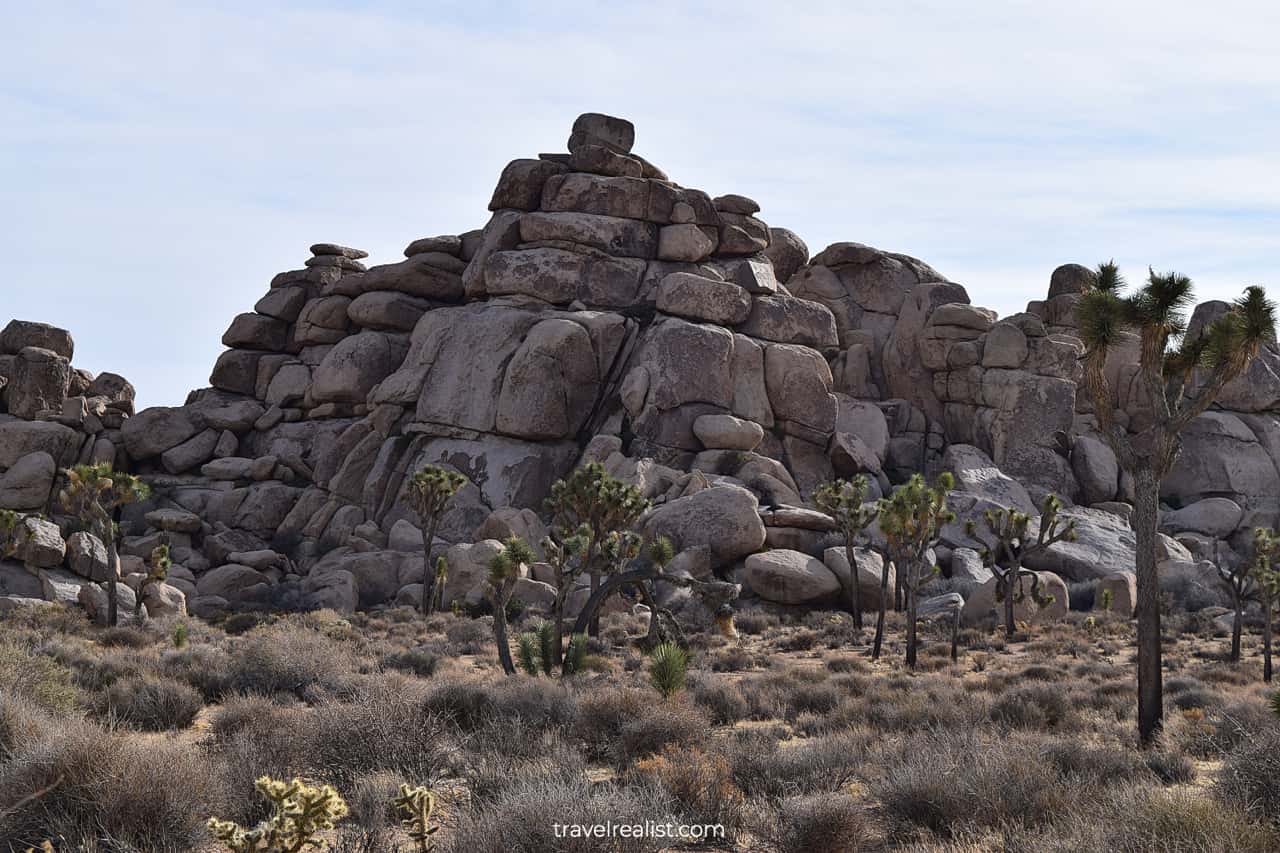
Hidden Valley Trail
The Hidden Valley Trail was our final stop in the park. Similar to the Cap Rock, the Hidden Valley features a self guided trail and several picnic tables. The Hidden Valley trail has some elevation and offers a different view of the park. Somehow Joshua Trees do not appear as breathtaking from a hill compared to up-close.
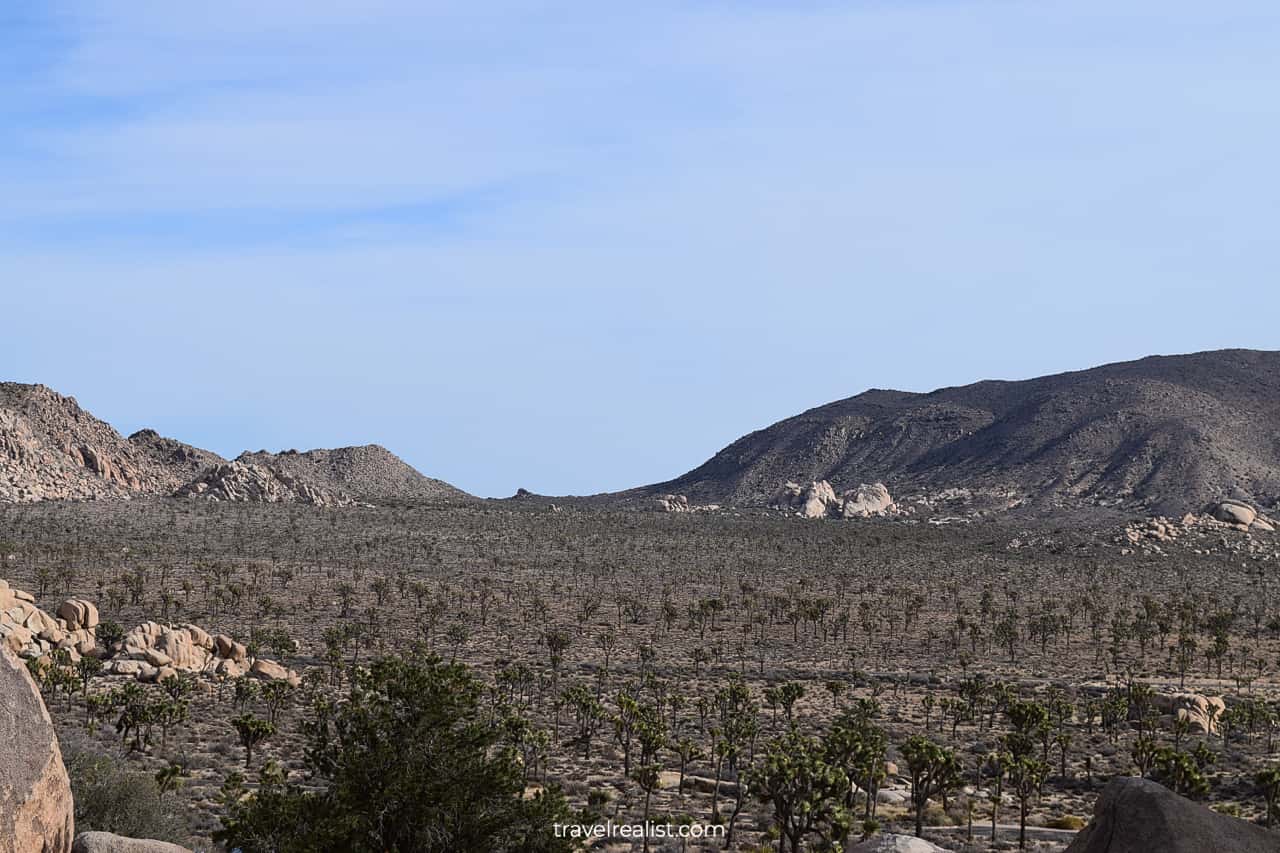
We exited the park through the West Entrance Station close to Joshua Tree, CA. Due to a long drive that day, we had to skip Quail Springs, Barker Dam, Indian Cove, Fortynine Palms Oasis, and Cottonwood Spring. That leaves more areas to explore next time we visit Joshua Tree.
Takeaways: Joshua Tree
Joshua Tree National Park is a beautiful park. The desert mountainous landscape, Joshua Trees, cacti, and boulders make this park a worthy destination. The park’s relative proximity to Los Angeles, CA also speaks in favor of a visit. Joshua Tree is a perfect day trip destination for LA locals and visitors looking to reconnect with nature. However, the park’s landscape is not unique to the Southwestern United States. You can get very similar views in different parts of Southern California, Nevada, Utah, and Arizona. Therefore, it is fine to skip this park if reaching Joshua Tree involves a significant extra effort.
Take a look at our Joshua Tree Video Guide and visit our YouTube channel for the latest videos.
Frequently Asked Questions
Joshua Tree or Yucca Palm is an integral part of the Mojave Desert ecosystem.
Joshua Tree is a perfect day trip destination from Los Angeles, CA. However, if your itinerary cannot easily accommodate this park, it is reasonable to skip it.
You can drive the Park Boulevard and other park roads provided you paid the park entrance fees. Some unpaved roads in the park require 4-wheel drive and high clearance vehicles.
Winter, late fall, or early spring before the Coachella Festival are best times to visit Joshua Tree National Park.
No advance reservation is required to visit Joshua Tree National Park.
You should budget about 3 to 4 hours to drive through and explore Joshua Tree’s viewpoints.
Safe realist travels!

